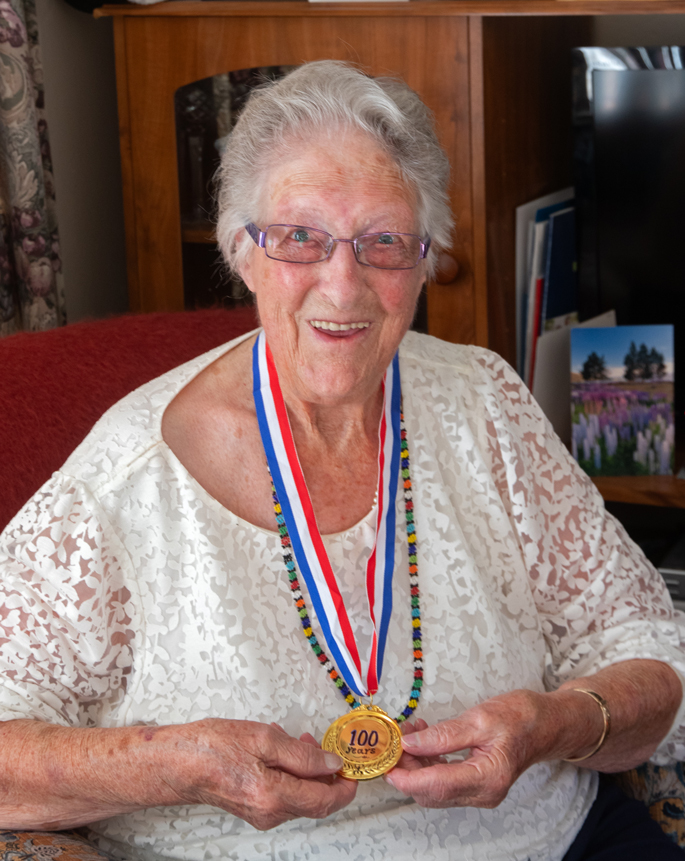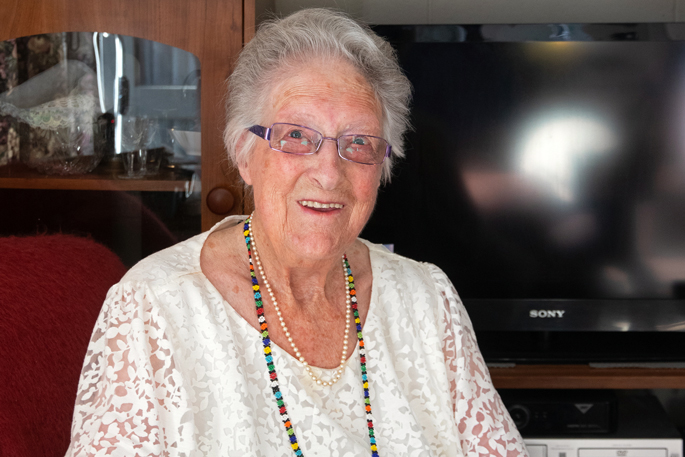“I’m a survivor. I have survived a lot,” says Tauranga resident Sylvia Nathan, who has just turned 100 years old and is sharing some of her experiences with The Weekend Sun.
Sylvia says she has learnt to survive since she was a young child – from being put into the foster system for nearly seven years, making it off the Lyttelton-Wellington ferry the Wahine the day it sunk in 1968, through to enduring the 2010 Christchurch earthquakes.
Sylvia was born in Roxburgh, Otago, on April 25, 1924 – Anzac Day.
The doctor incorrectly wrote her birthday as April 26 on her birth certificate, but Sylvia’s mother told her to hold onto the 25th.
“She said: ‘Anzac Day you still keep girl. I know when you were born,’” says Sylvia.
State care
When Sylvia was five years old, her dad left his three young children and wife.
“My dad walked out on the three of us and we had no home – nothing.”
Times were different in the 1920s and 1930s if you became a solo parent, says Sylvia.
“There were no pensions, no unemployment benefits or things like that in New Zealand – nothing. So mum had to work eight hours a day until she got the pension at the age of 60. We were put into state care for almost seven years.”
During this time Sylvia and her siblings were bounced around different schools and homes.
“They were hard times because I lacked with learning. We had no books or anything like that. We all slept in one big hut; the boys and the girls and in between. We had different changes from one school to another.”
Sylvia says her dad would pick them up from the school sometimes and drop them off at foster homes.
“He would leave us with the other people.”
Giving a glimpse at what some of those experiences were like, Sylvia says: “One time we were locked in the room so we didn’t get out. I’ve been very resilient through that experience”.
Sylvia was aged 12 when she left school and began working cleaning houses, before working at the Kaiapoi woollen mills throughout the war.
The Wahine
In her middle years, Sylvia was aboard the Wahine with her late husband Lawrence Nathan and a friend, travelling from Lyttelton to Wellington on April 10 in 1968.
They knew there was bad weather coming but had crossed with the ferry many times, says Sylvia.
Her sister Mavis had called her too. “[Mavis] reminded me there was a terrible storm coming and I said: ‘Yes well worst things happen at sea’.”
Foreshadowing events to come, the vessel struck the Barrett Reef at 6.40am.
“We got up early and dressed for breakfast but the storm was so bad and nothing would stay on the counter for breakfast…and then all of a sudden it hit the reef and I was thrown from the counter right across to the other side. I did have water on the knee for a while.”
The three of them made it into one of the evacuation life rafts in the storm along with other passengers, says Sylvia.
 Sylvia Nathan as a younger woman. Photo: supplied.
Sylvia Nathan as a younger woman. Photo: supplied.
Out in the perilous conditions, Sylvia says they’d get close to the shore but “the storm was still raging and the wind would suck us out again”.
Eventually, they made it to safety. “We missed all the rocks. That was the danger that caused so many deaths was the rocks. We landed on a bed of kelp.”
It wasn’t until they had been through all the emergency services, been re-clothed, fed, sheltered and put onto a plane back to Christchurch that the reality of the disaster they had just survived hit them.
“The three of us couldn’t stop crying all the way home to Christchurch on that flight.”
Today, the Wahine disaster remains New Zealand’s worst modern maritime disaster, having claimed 53 lives.
Christchurch earthquakes
Decades later, Sylvia would see herself in the midst of yet another disaster – the 2010 Christchurch earthquakes. She was in her mid-80s and living in Kate Sheppard Retirement Village when the earthquakes struck.
“The first one that came was four o’clock in the morning. It woke me out of dead sleep. My blood pressure went up. My knees were jelly. My reactions have always been very quick. The first thing I thought of was an escape route.
“It was pitch black. It was like the end of the world – that eerie feeling. Horrible.
“I ended up being thrown against a wall. That was a big one. That was the one that some of these places were split right through the middle.” Nonetheless, Sylvia survived once again.
The village was severely damaged by the earthquake and subsequently closed. “It was the liquefaction that came up and it just filled the building straightaway.”

Sylvia says residents were billeted out to all different parts of the North Island and Oxford.
Now, at 100 years old, Sylvia lives in Bureta.
She has a warm smile on her face and enjoys getting in her garden. No one would be any the wiser about the kind of life she’s lived.
“I just get to move on, take a day at a time and enjoy my life.”

